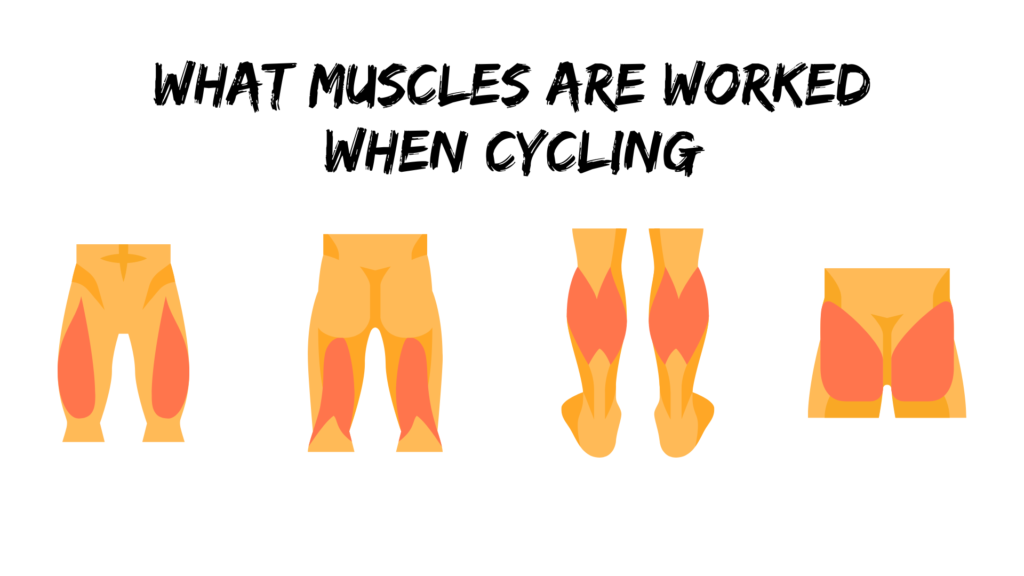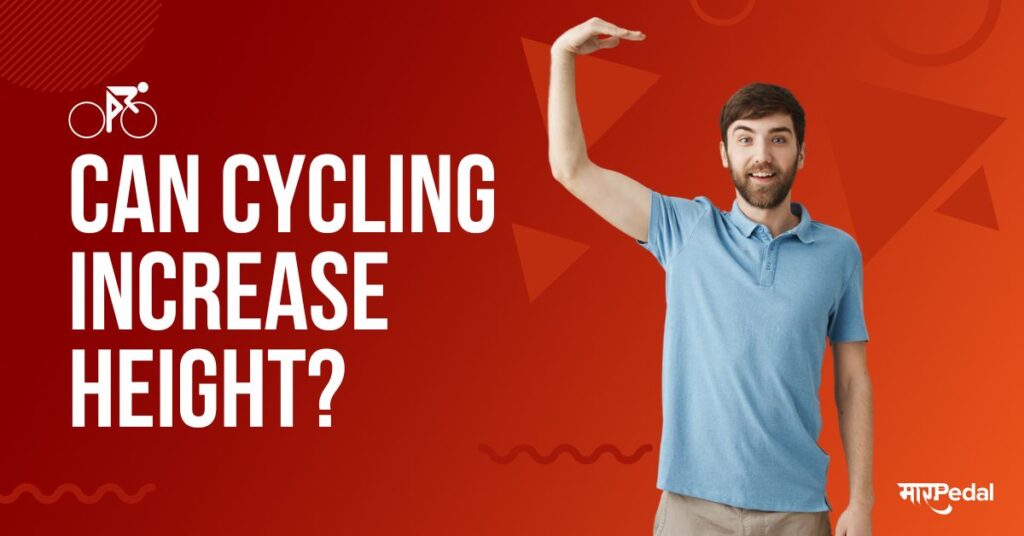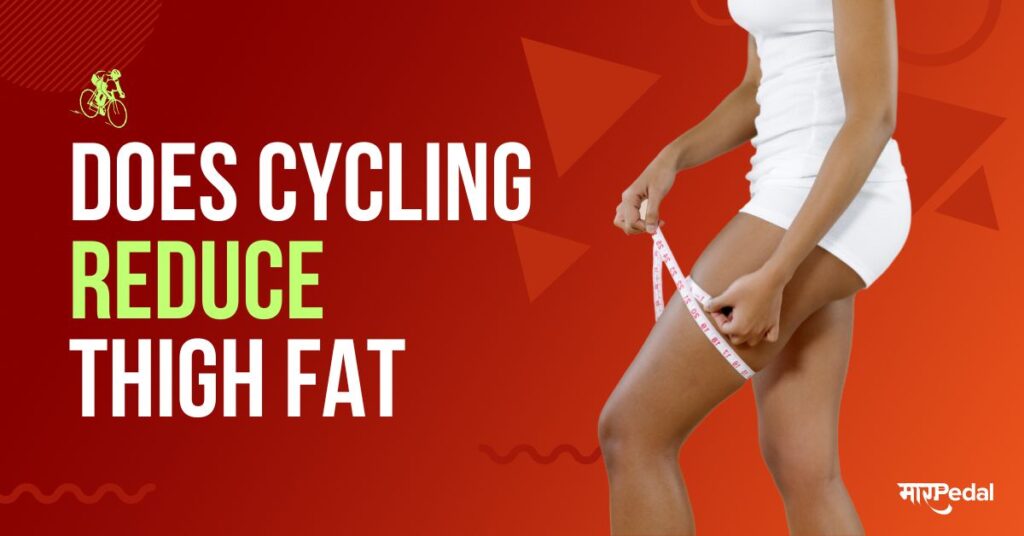
Cycling is a popular form of exercise that offers numerous health benefits. It is a low-impact activity that can be enjoyed by people of all ages and fitness levels. One common question among cyclists is, “what muscles are worked when cycling?” In this comprehensive guide, we will explore the muscles involved in cycling and how they contribute to your overall fitness. So, hop on your bike, and let’s dive in!
Cycling Works Which Muscles?
Cycling is a full-body workout that engages several major muscle groups. Let’s take a closer look at the key muscles involved:
1. Quadriceps
The quadriceps, located in the front of your thighs, are the primary muscles used when cycling. These muscles extend your knee when you pedal down and provide the power for each stroke. Regular cycling helps to strengthen and tone your quadriceps, giving you greater endurance and power on the bike.
2. Hamstrings
Located at the back of your thighs, the hamstrings are also involved in cycling. They assist the quadriceps in extending the knee during the downstroke and play a crucial role in generating power. Strengthening your hamstrings through cycling can improve your overall leg strength and stability.
3. Glutes
Your gluteal muscles, including the gluteus maximus, medius, and minimus, are activated when you cycle. These muscles provide stability and power during each pedal stroke. Regular cycling can help tone and strengthen your glutes, giving you better control over your bike and enhancing your overall cycling performance.

4. Calves
The calf muscles, including the gastrocnemius and soleus, play a supportive role in cycling. They assist in pushing the pedals downward and contribute to the propulsion of the bike. As you pedal, your calf muscles contract and relax, helping you maintain a steady and efficient cycling motion.
5. Core Muscles
Cycling also engages your core muscles, including the abdominals and lower back muscles. These muscles help stabilize your body on the bike and maintain proper posture. A strong core is essential for optimal cycling performance, as it improves your balance, control, and overall efficiency.
6. Hip Flexors
The hip flexor muscles, such as the iliopsoas and rectus femoris, are actively involved in cycling. These muscles help lift your knees and bring your thighs forward during each pedal stroke. Regular cycling can help improve the flexibility and strength of your hip flexors, enhancing your pedaling efficiency.
See also: How to Identify Hip Flexor Pain in Cycling?
7. Upper Body Muscles
While cycling primarily focuses on the lower body, it also engages the muscles in your upper body. Your arms, shoulders, and upper back muscles provide stability and support while you ride. Maintaining a relaxed but engaged upper body posture can help prevent unnecessary strain and fatigue.
Benefits of Cycling for Muscle Development
- Strengthens Leg Muscles: Cycling is a low-impact exercise that strengthens and tones the muscles of the legs, including the quadriceps, hamstrings, and calves. Regular cycling can lead to improved muscle endurance and increased power in the lower body.
- Tones the Glutes: Cycling targets the gluteal muscles, helping to firm and shape the buttocks. Regular cycling workouts can contribute to stronger and more defined glute muscles.
- Builds Core Stability: The core muscles play a crucial role in maintaining proper cycling form and balance. By engaging the core during cycling, you can improve core stability and develop a stronger midsection.
- Improves Upper Body Strength: While the focus of cycling is on the lower body, the upper body still contributes to the overall movement. Regular cycling can help improve upper body strength and muscular endurance, especially in the arms, shoulders, and upper back.
Proper Cycling Technique for Muscle Engagement
To maximize the engagement of different muscle groups while cycling, it’s important to maintain proper technique:
- Adjust your bike to the correct fit, ensuring that your seat height and handlebar position are appropriate for your body.
- Focus on pushing and pulling the pedals throughout the entire pedal stroke, engaging both the quadriceps and hamstrings.
- Incorporate intervals and hills into your cycling routine to challenge and activate different muscle groups.
- Maintain a strong and stable core by engaging your abdominal muscles and keeping your upper body relaxed but supported.
- Remember to maintain a proper warm-up and cool-down routine to prevent muscle strain and enhance recovery.
Conclusion
Cycling is a fantastic exercise that not only benefits cardiovascular health but also targets multiple muscle groups in the body. By engaging the quadriceps, hamstrings, glutes, calves, core muscles, and even the upper body, cycling provides a comprehensive full-body workout. Incorporating cycling into your fitness routine can lead to improved muscle strength, endurance, and overall fitness levels.
FAQs
What muscles are toned by cycling?
Cycling primarily tones the lower body muscles. This includes the quadriceps, hamstrings, glutes, and calf muscles. Additionally, cycling also engages the core muscles, including the abdominals and back muscles, for stability and posture while riding.
Which muscles do most of the work in cycling?
The major muscles doing most of the work during cycling are the quadriceps and hamstrings in the thighs, and the gastrocnemius and soleus muscles in the calves. The gluteus maximus also plays a significant role, especially during uphill and high-intensity cycling.
Can you build muscle from cycling?
Yes, cycling can contribute to building muscle, especially in the lower body. However, the extent of muscle building from cycling is typically less pronounced than from weightlifting. Cycling is more effective for improving muscle tone and endurance rather than significantly increasing muscle size.
Can you lose belly fat by cycling?
Cycling can help you lose belly fat as part of an overall fitness and diet plan. It is an effective cardiovascular exercise that burns calories and can contribute to overall body fat reduction, including the abdominal area. However, targeted fat loss in specific areas is not possible; fat loss will occur across the entire body.
Is 20 minutes of cycling a day enough to lose weight?
Twenty minutes of cycling a day can contribute to weight loss, especially for beginners or those with a sedentary lifestyle. It can help increase metabolic rate and burn calories. However, the effectiveness for weight loss also depends on the intensity of cycling and other lifestyle factors such as diet.
Is 30 minutes of cycling enough to lose weight?
Yes, 30 minutes of cycling, especially if done regularly and at moderate to high intensity, can be enough to lose weight. This duration can effectively burn calories and improve cardiovascular health. Pairing this exercise with a healthy diet and lifestyle will yield the best results for weight loss.






